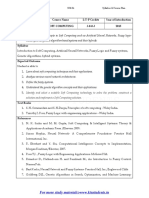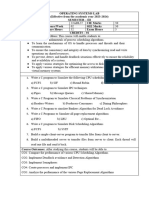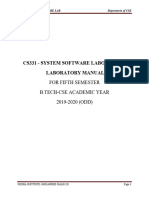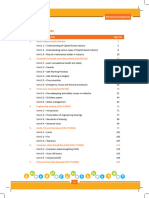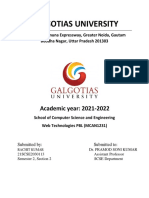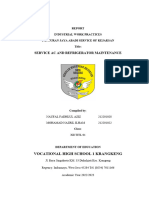0% found this document useful (0 votes)
531 views2 pagesCS331 System Software Lab CSE Syllabus-Semesters - 5
The document outlines the syllabus and course plan for the System Software Lab course (CS331) for the 5th and 6th semesters of the B-Tech CSE program. The course objectives are to build an understanding of designing and implementing different types of system software. There are two parts that list 21 total exercises/experiments covering topics like CPU scheduling algorithms, file allocation strategies, paging, file organization techniques, the banker's algorithm, disk scheduling algorithms, page replacement algorithms, and producer-consumer problems. The expected outcomes are that students will be able to compare and analyze CPU scheduling algorithms, implement basic memory management and synchronization techniques, implement the banker's algorithm, and implement system software like loaders, assemblers,
Uploaded by
RONIN TCopyright
© © All Rights Reserved
We take content rights seriously. If you suspect this is your content, claim it here.
Available Formats
Download as PDF, TXT or read online on Scribd
0% found this document useful (0 votes)
531 views2 pagesCS331 System Software Lab CSE Syllabus-Semesters - 5
The document outlines the syllabus and course plan for the System Software Lab course (CS331) for the 5th and 6th semesters of the B-Tech CSE program. The course objectives are to build an understanding of designing and implementing different types of system software. There are two parts that list 21 total exercises/experiments covering topics like CPU scheduling algorithms, file allocation strategies, paging, file organization techniques, the banker's algorithm, disk scheduling algorithms, page replacement algorithms, and producer-consumer problems. The expected outcomes are that students will be able to compare and analyze CPU scheduling algorithms, implement basic memory management and synchronization techniques, implement the banker's algorithm, and implement system software like loaders, assemblers,
Uploaded by
RONIN TCopyright
© © All Rights Reserved
We take content rights seriously. If you suspect this is your content, claim it here.
Available Formats
Download as PDF, TXT or read online on Scribd
/ 2


